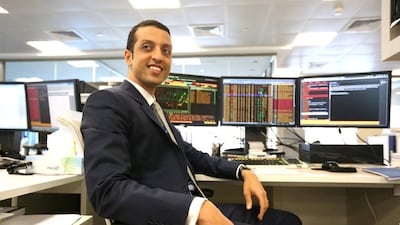What is the asset class and geography you are focused on?
Waha Capital, a long-established Abu Dhabi-based investment company with direct investments in aviation, finance, health care, oil and gas services and real estate, began investing in capital markets a couple of years ago, and I head up the emerging markets trading desk. I’m particularly focused on bonds and credit default swaps from issuers in Central and Eastern Europe, the Middle East and Africa (CEEMEA).
What is the outlook for the year ahead?
In general, we are positive on emerging market debt in the long run, given the superior growth dynamics, cheapness versus developed markets, and increasing strategic allocations by institutional investors. But after a couple of years of strong performance, emerging market credit saw a sell-off in the second half of 2013, with yield spreads widening by over 150 basis points, as the US Federal Reserve raised the prospect of tapering its bond-buying programme. The increase in US treasury yields impacted total emerging market (EM) bond returns, with EM investors reporting their worst performance since the 2008 crisis. Waha Capital’s profile fared better than most, ending the year up 15 per cent.
We believe this year is going to be equally challenging for bond investors, who will need to be much more selective than in the past, when markets moved in tandem with global risk-on, or risk-off sentiment. Increasingly positive macroeconomic conditions in the United States will put upward pressure on US treasury yields, and current credit spread valuations in emerging markets are, in general, fair to expensive. I think there will be better entry points for investors later in the first quarter, and new debt issuance should also offer investors some attractive opportunities. We expect more than US$150 billion of new issuance from the CEEMEA region this year.
I think GCC debt will remain a good defensive play, despite the current tight valuations, thanks to robust economic fundamentals and a growing investor base. Meanwhile, Russian credit should continue to outperform Turkey and South Africa this year. Turkey is undergoing unorthodox monetary policy, but the long-term drivers of growth are still intact, so there may be a time this year when long-term investors should take another look.
What are the main risks (upside or downside) to that outlook?
An upside scenario would be subdued volatility of US treasury yields at the same time as an uptrend in global economic growth. In specific markets, investors will be hoping for smooth and market-friendly election outcomes in Turkey and South Africa. The main risk I see in 2014 is for one of the current account deficit countries to suffer a financial fracture where it is unable to fund its deficit, triggering a knock-on effect on other emerging market sovereigns with weak current account balances.
What was the worst investment you were involved with?
During the May-June sell-off last year, despite having fully hedged interest rate exposure, we under-estimated the second order effect of the tapering discussion on credit spreads, which was further exacerbated by poor market liquidity at the time.
What was the best?
Posting more than a 50 per cent return in 2012 by maintaining a long conviction despite some major global risk-off events. In particular, we were long on GCC, which was extremely cheap for its credit rating.
abouyamourn@thenational.ae

